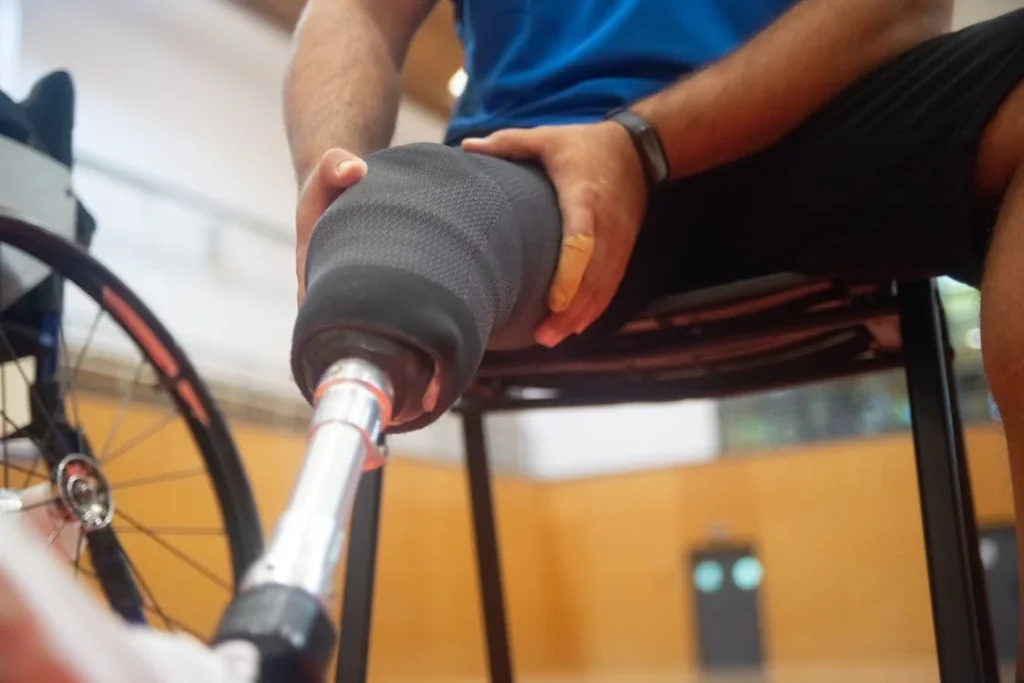Losing a limb can change many things about a person’s life. It affects how they move, how they feel about their body, and even how they interact with the world around them. But one of the most common and least talked-about challenges that come right after limb loss is muscle atrophy — when the muscles in the remaining part of the limb start to waste away from lack of use.
The good news? This can be prevented. And one of the most effective ways to do that is by fitting a prosthesis early — before the muscles begin to shrink, before mobility becomes more difficult, and before other complications set in.
At Robobionics, we’ve seen this happen time and again with patients across India. The ones who get their prosthetic limbs fitted early — and start using them — almost always recover faster, stay stronger, and live more independently.
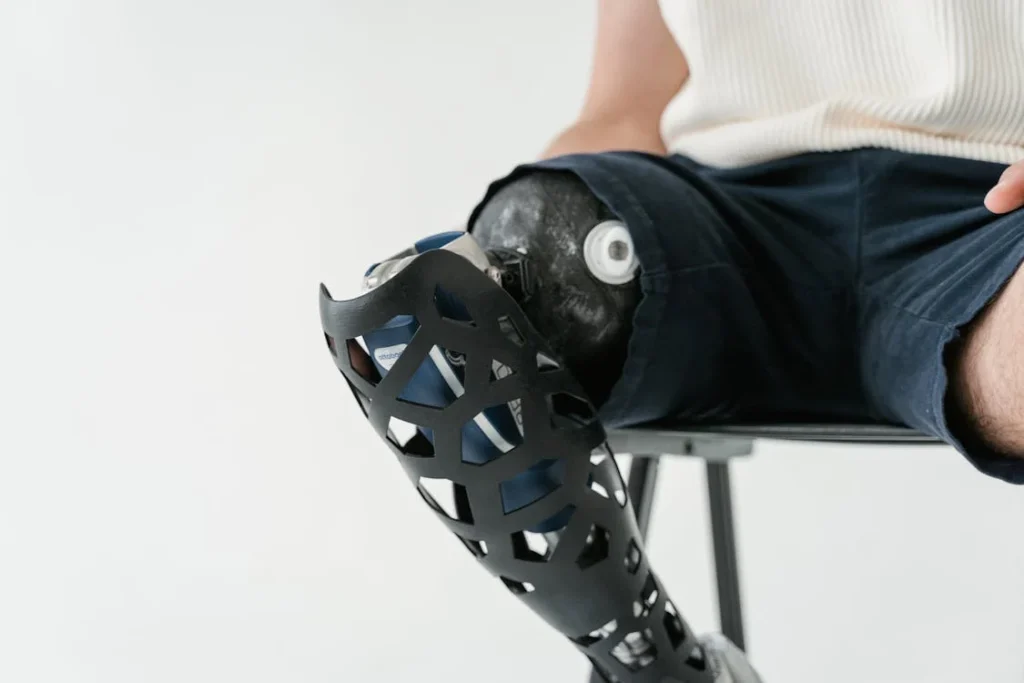
Understanding Muscle Atrophy After Amputation
Muscle atrophy is one of the biggest risks people face after an amputation. It’s not just about muscle loss — it’s about what that muscle loss leads to. Weakness, slower recovery, reduced mobility, and sometimes even long-term disability. If not managed early, it becomes harder to reverse over time.
Let’s break it down and understand why this happens and what exactly goes on inside the body.
What Is Muscle Atrophy?
Muscle atrophy simply means muscle shrinking or wasting away. Your muscles stay strong when you use them. But when they aren’t used regularly — like after an amputation when movement is reduced — they start to shrink.
Think about a broken leg in a cast. After a few weeks, that leg looks smaller than the other. Why? Because it hasn’t been used. Muscles need activity and resistance to stay active and healthy. Without that, they weaken. This is what happens to the residual limb — the part of your limb that remains after amputation — if it’s not kept active.
Why Does Atrophy Happen So Quickly After Amputation?
The body reacts very fast to inactivity. Within days of surgery, muscle fibers start to break down. The signals that usually travel between your brain and the muscles get weaker. Blood flow reduces. And before long, muscles begin to shrink.
There are several reasons why this happens so fast after an amputation:
- Sudden drop in physical activity – After surgery, the patient is mostly resting. There’s very little movement. This lack of activity triggers muscle breakdown.
- Pain and swelling – Pain in the residual limb discourages movement. Swelling also limits the range of motion. Both of these cause the muscles to go unused.
- Loss of load-bearing – Legs, especially, are used to carrying the body’s weight. After amputation, that load is gone. Without weight-bearing activities, the leg muscles shrink faster.
- Emotional trauma and depression – Let’s not forget the emotional side. Many patients lose interest in movement or activity due to grief or anxiety. This emotional shutdown adds to the physical inactivity.
Which Muscles Are Affected?
It depends on the level of amputation. But in most cases, the muscles that surround the residual limb are at the highest risk. For example:
- In a below-knee amputation, the calf muscles (gastrocnemius, soleus) and thigh muscles (quadriceps, hamstrings) can atrophy.
- In an above-knee amputation, the upper leg muscles, hip flexors, and glutes are vulnerable.
Upper limb amputations (like hand or arm amputations) also see muscle loss in the shoulder, bicep, triceps, and forearm, depending on where the limb is removed.
What Happens If Muscle Atrophy Is Not Prevented?
The long-term impact of muscle atrophy is serious. It doesn’t just mean thinner muscles. It affects nearly every part of recovery:
- Weaker body – You need strong muscles to support the prosthesis. If the surrounding muscles are too weak, the prosthesis may not fit or work well.
- Reduced mobility – Muscle strength is critical for walking, balance, and coordination. Without it, everyday movements become harder.
- Longer rehab time – With muscle loss, rehab takes much longer. Exercises have to rebuild what was lost before moving forward.
- Higher risk of injury – Weak muscles put more strain on joints. This increases the risk of falls, joint pain, and further complications.
- Poor prosthesis usage – Some people end up abandoning the prosthesis because they feel it’s uncomfortable or hard to use — not realizing it’s because their body is too weak to support it.
The Window of Opportunity
Here’s the most important part: there’s a small window — usually within the first few weeks or months after surgery — when muscles can be preserved. After that, the damage becomes harder to undo.
This is where early prosthesis fitting makes a world of difference. It helps the body move again, re-engages the muscles, and prevents them from wasting away. Think of it as turning the system back on before it starts shutting down.
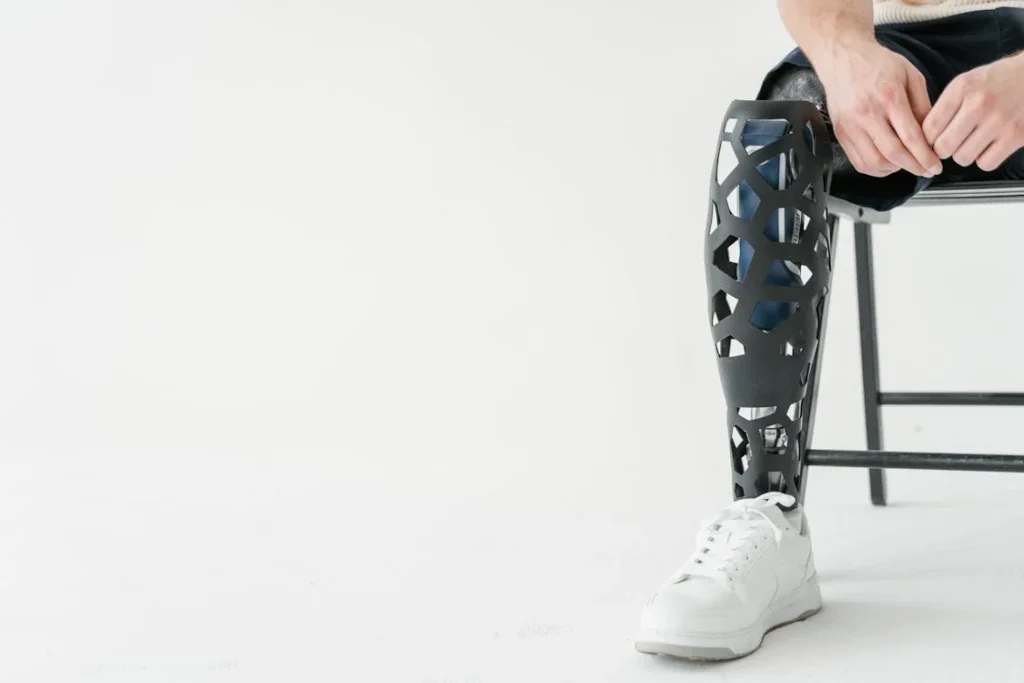
How Prosthetic Limbs Reactivate Muscle Function
Once a prosthesis is fitted, it becomes more than just a tool for movement. It becomes a signal to your body that it’s time to engage again — to stand, to walk, to move with purpose. For people who’ve lost a limb, this moment is often a turning point. It’s when they start to feel in control of their body again. But more importantly, it’s when their muscles begin to respond.
In this section, we’ll explore how prosthetic limbs help “wake up” the muscles and why timing is so important for this process to work smoothly.
Getting the Body Back in Motion
Muscles are like engines. If they’re not used for a while, they start to stall. But when they’re put back to work — even gently — they begin to pick up power again.
A well-fitted prosthetic limb provides just the right amount of activity to stimulate those muscles. Whether it’s standing, shifting weight, or taking a few steps, all of these actions start to re-engage the muscle groups around the residual limb. That movement is what stops atrophy in its tracks.
In fact, early weight-bearing is one of the most powerful signals your brain can send to your muscles. It says, “We’re back in business.” This signal improves blood flow, nerve connections, and overall function in the limb.
Muscle Memory and Rebuilding Strength
When someone gets back on their feet after an amputation, they’re not starting from scratch. The body has a built-in memory of how to move, and early prosthesis use helps tap into that memory quickly.
Even if the person is walking with support or only for short periods, the muscles begin to remember their old roles. The hip flexors learn to lift the limb again. The core muscles start to stabilize the body. The glutes begin firing up with each step.
This isn’t just important for strength. It’s crucial for balance, coordination, and confidence.
Over time, as the person uses the prosthesis more regularly, the muscle groups work together more efficiently. This lowers the need for intense rehab down the line, because much of the “foundation” work is already done.
The Role of Physical Therapy Alongside Prosthetics
A prosthesis alone isn’t a magic fix. But when combined with the right physical therapy, it becomes a powerful tool to prevent muscle loss.
Therapists use the prosthesis to guide specific movements that target weakened muscles. They help teach the person how to shift their weight, use proper posture, and activate the right muscle groups. These small adjustments can prevent strain and allow for better muscle development.
And because the prosthesis allows for standing and walking, therapy sessions become more dynamic. Instead of just stretches or bed exercises, patients can work on balance, endurance, and real-world mobility. That leads to faster recovery and better results.
When the Prosthesis Becomes Part of the Body
One of the most powerful effects of early prosthetic use is integration. Over time, the prosthetic limb doesn’t just feel like a tool — it feels like an extension of the body. That mental and physical integration leads to more natural movement, which further encourages muscle activity.
The earlier this process begins, the better. When the body and brain accept the prosthesis as part of normal function, everything improves: movement, comfort, balance, and strength.
But this only happens when the fitting happens at the right time — before muscle loss sets in too deeply.
Psychological Benefits That Boost Physical Recovery
There’s one more important factor we shouldn’t ignore — motivation.
When a person receives their prosthetic limb early, it gives them hope. That hope leads to action. They want to stand, walk, move again. And when they do, the muscles respond.
This boost in morale plays a huge role in overall recovery. A motivated patient is more likely to follow through with therapy, stay active, and push through the hard days. That means better muscle preservation and better long-term results.
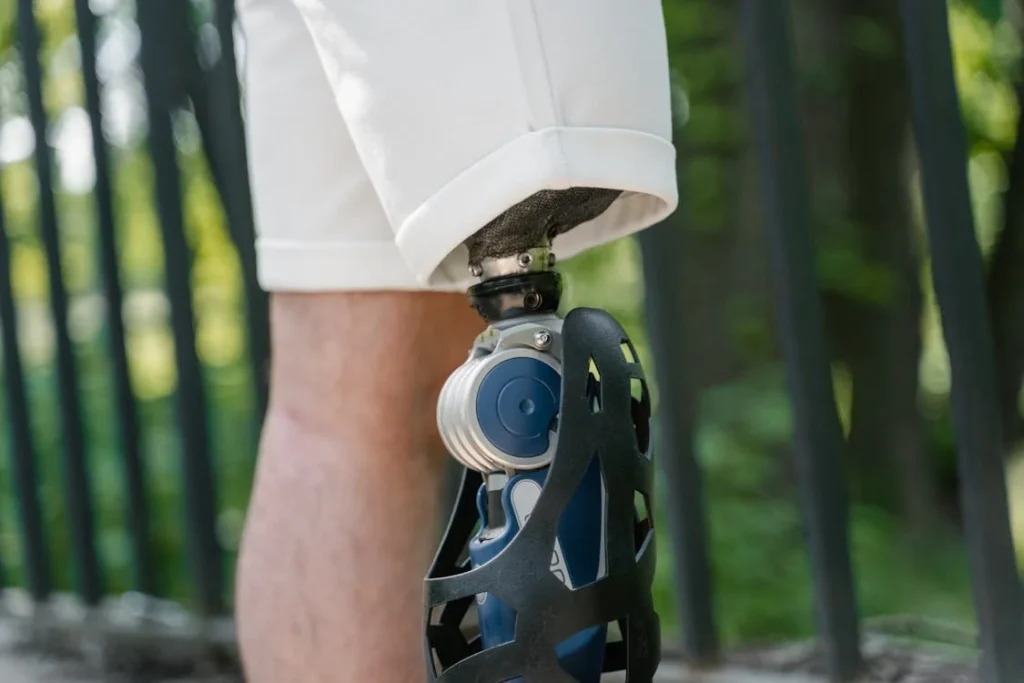
The Risks of Delaying Prosthesis Fitting
Waiting too long to get a prosthesis can do more harm than many people realize. On the surface, it may seem like a cautious move — to wait until the wound is fully healed or the body feels “ready.” But during this waiting period, the body is changing. And not always for the better.
Delayed prosthesis fitting often opens the door to deeper muscle atrophy, longer rehab times, and even emotional setbacks that are hard to recover from. Let’s take a closer look at what’s really at risk when the fitting is postponed.
Muscles Get Weaker — Fast
Muscle loss doesn’t just happen over years. It can begin within a few weeks of inactivity. When the body doesn’t use a limb or the surrounding muscles, they start to break down. And the longer this goes on, the harder it becomes to regain that strength.
If a person waits three to six months before getting a prosthetic limb, they often lose a significant amount of strength in their residual limb, as well as the surrounding joints like the hip, knee, or shoulder. This doesn’t just make walking or standing harder — it also makes using the prosthesis more tiring and uncomfortable when it’s finally fitted.
In simple terms: the longer you wait, the more effort it takes to catch up.
Loss of Joint Mobility and Flexibility
When a limb is not used, not only do the muscles shrink, but the joints also become stiff. Without regular movement, joints lose their range of motion. This makes everyday actions — like bending a knee, lifting a leg, or rotating the hip — much more difficult.
By the time a prosthesis is fitted after a long delay, the joint may not even be able to move properly, making it painful or awkward to walk. This often requires extra therapy just to loosen up the body again — delaying recovery further.
Higher Chance of Complications
When the muscles weaken and the body becomes inactive, it leads to more than just poor mobility. It increases the chances of several complications:
- Contractures: This happens when muscles and tendons shorten and tighten, making joints stuck in one position.
- Poor blood circulation: Less movement means poorer blood flow, especially to the residual limb, which may slow down healing or cause infections.
- Balance problems: Weak muscles mean the body can’t stabilize itself well. This raises the risk of falls and injuries.
- Weight gain: Inactivity often leads to added body weight, which makes movement harder and places more strain on the prosthesis when it’s finally used.
Delayed Independence
One of the biggest emotional blows of a delayed prosthesis is the loss of independence. People want to move around, do things on their own, and get back to their routine. But without a limb that supports them, they often end up relying more on caregivers, wheelchairs, or crutches.
The longer this continues, the harder it becomes to rebuild confidence. Simple things like walking to the bathroom or stepping out for a walk become intimidating. For some, the fear of falling or failing keeps them from trying at all — even after they finally get the prosthesis.
That’s why early fitting is not just about muscles. It’s about restoring normalcy and freedom before the mind and body give up.
Emotional and Psychological Impact
The emotional weight of living without a prosthesis can be just as damaging as the physical effects. People who wait too long often feel stuck. They may feel like they aren’t healing, or worse, that they’ll never get back to where they were before.
This kind of hopelessness can lead to:
- Depression
- Anxiety about mobility
- Social withdrawal
- Loss of motivation in therapy
But when the prosthesis comes in early, it gives people a reason to fight. It shows them what’s possible — and gives them a path forward.
Adapting Late Means Learning Twice
One often-overlooked risk of late fitting is how much harder it becomes to learn new movement patterns. When someone has been moving a certain way — say, hopping on one leg or using a walker — their body starts to adapt to that. The brain and muscles create new habits around these movements.
When a prosthesis is finally introduced, these habits must be unlearned. That takes time. In contrast, early prosthetic fitting helps the body build proper movement patterns from the start, which leads to smoother, faster adaptation.
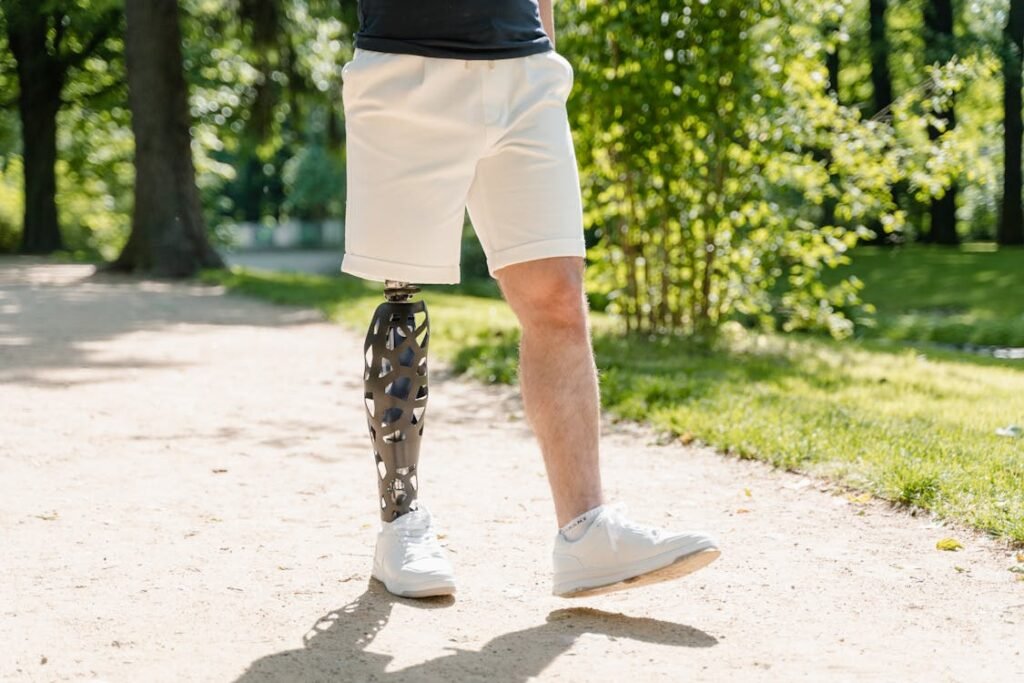
How Early Fitting Works in Real-World Recovery
Understanding the science is one thing — but knowing what to expect in real life makes all the difference. At Robobionics, we’ve worked with hundreds of patients across India, from young adults to seniors, and one thing is clear: early fitting of a prosthesis changes the game.
When done right, it sets the stage for quicker recovery, stronger muscles, and better mobility. But it’s not just about rushing into it. There’s a process — one that balances safety with timing and is tailored to each individual.
Let’s walk through how early prosthesis fitting works in the real world and what patients and families should prepare for.
Step 1: Healing First, But Don’t Wait Too Long
After an amputation, the body needs time to heal. This typically includes:
- Wound healing
- Reduction of swelling
- Shaping of the residual limb
This period can last anywhere from 3 to 8 weeks, depending on the person’s health, age, and the type of surgery.
But during this healing phase, it’s critical to start pre-prosthetic rehabilitation. That means keeping the body moving, gently exercising the remaining limb, maintaining flexibility, and preparing mentally for life with a prosthesis. This stage builds a solid foundation — so that when the time comes to fit the limb, the body is ready.
Step 2: Limb Shaping and Preparation
Before a prosthetic limb can be fitted, the residual limb needs to be shaped and strengthened. Why?
Because the prosthesis must fit snugly and safely around the limb. If the shape is irregular or swollen, it can lead to pressure sores, pain, or imbalance.
To guide this process, patients are often advised to use:
- Compression socks or bandages to reduce swelling
- Gentle massage and exercises to prevent stiffness
- Strengthening routines for the hips, thighs, or shoulders
This stage helps ensure that when the prosthesis arrives, the limb can handle the fit — and begin movement right away.
Step 3: The First Prosthetic Fitting
This is often an emotional moment. It’s the first time the person sees themselves with a new limb. It may not be perfect — most first prostheses are temporary or trial versions — but they are designed to get the body moving again.
At this stage, the prosthesis is usually lightweight, adjustable, and easy to use. The goal is to:
- Reintroduce weight-bearing activity
- Restore early mobility, like standing or walking short distances
- Prevent muscle atrophy by using the limb daily
- Boost confidence with basic movement
In most cases, this first prosthetic fitting happens between 4 to 8 weeks post-surgery, assuming the wound has healed and swelling is under control.
Step 4: Physical Therapy + Prosthesis Use
Once the prosthesis is fitted, the journey doesn’t stop — it accelerates. The next few weeks are critical. Patients work closely with physiotherapists to:
- Learn how to walk, balance, and shift weight
- Develop muscle strength through controlled activity
- Prevent poor movement habits from forming
- Build stamina and confidence in everyday actions
Therapists also help address any discomfort in the fit. If needed, the prosthesis is adjusted, reshaped, or upgraded over time to support better movement.
This active phase can last several months, and the more consistent the patient is, the faster the body adapts.
Step 5: Moving to a Permanent Prosthesis
Once the limb has stabilized — meaning its shape, strength, and healing have become consistent — the patient is usually ready for a permanent prosthetic limb. This version is designed for long-term use. It’s often more advanced, more customized, and much more comfortable.
At this point, the muscles are already strong, habits are in place, and the patient has confidence. That’s the real advantage of early fitting: it allows the person to “graduate” to this final stage faster, healthier, and with a much better quality of life.
What Makes Early Fitting Successful?
While the timeline varies, early fitting works best when a few key conditions are met:
- Team coordination: The surgeon, physiotherapist, and prosthetist must work closely together from day one.
- Patient mindset: Early fitting only works if the patient is ready to engage. It requires effort, optimism, and consistency.
- Support system: Family, caregivers, and rehab teams play a huge role in daily motivation and practical help.
When all of this comes together, patients don’t just avoid muscle atrophy — they move toward full, active living again.
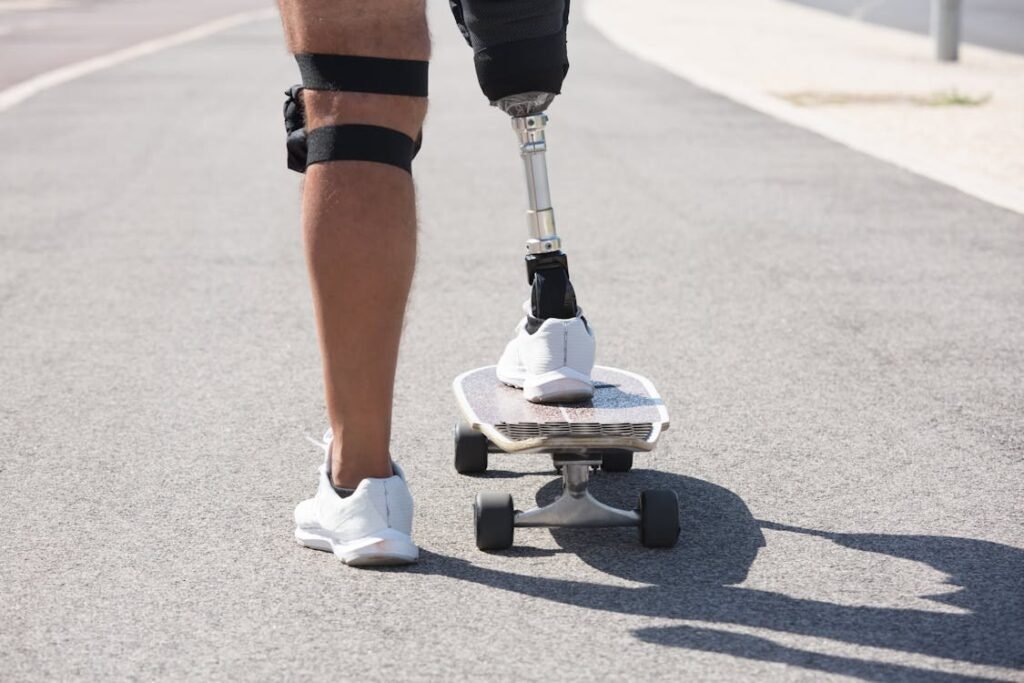
Common Myths About Early Prosthesis Fitting
Even with all the science and patient success stories, there are still many myths around early prosthesis fitting. These myths often cause patients and families to delay what could be the most important step in their recovery journey. Unfortunately, that delay can come at the cost of strength, independence, and quality of life.
Let’s clear up some of the most common misconceptions — and look at what’s actually true based on real-world experience.
Myth 1: “The limb has to heal completely before even thinking about a prosthesis.”
This is one of the most widespread beliefs — and one that often leads to unnecessary delays. While it’s true that the wound needs to be closed and free from infection before fitting a prosthesis, you don’t need to wait for full healing or perfect limb shape.
In fact, that waiting period is often the best time to start preparing for early fitting. Using shrinker socks, doing light exercises, and staying in touch with your prosthetist allows the transition to happen much sooner and more smoothly.
What’s more, modern prosthetics are often adjustable and designed to accommodate minor changes in limb shape as healing continues. So you don’t need to “wait it out” — you just need proper guidance.
Myth 2: “I’ll get fitted once I’m stronger.”
It’s understandable — people want to feel ready. But here’s the truth: the prosthesis is what helps you get stronger. Waiting to gain strength without a prosthetic limb is like trying to learn swimming without water.
The sooner you start using the limb, the sooner your body begins rebuilding the muscle memory and strength it needs. If you wait until you “feel ready,” you may find yourself further behind than you expected — and the climb back becomes steeper.
Early fitting gives your muscles the reason to wake up. The prosthesis becomes part of your strength-building journey, not something that comes after it.
Myth 3: “The prosthesis will hurt if I start using it too soon.”
Discomfort can happen with any new device — but pain is not normal. If the prosthesis is fitted by a trained expert and you’re under supervision, early use should not hurt. In fact, the right prosthesis should feel supportive, even if it takes time to adjust.
The real problem starts when muscles are too weak or joints are too stiff. That’s when people struggle with the fit and feel of the prosthesis — not because they started too early, but because they waited too long.
Early fitting allows your body to adjust in smaller, manageable steps, instead of trying to do everything at once later when the limb is weaker.
Myth 4: “Older adults should wait longer to fit a prosthesis.”
Age is not the deciding factor — health and mindset are. Many older adults in India and around the world have benefited from early fitting. In fact, starting early is often more important for seniors, because they tend to lose muscle mass faster and face greater risks from inactivity.
With a well-planned rehab approach and support from a care team, seniors can regain mobility, independence, and confidence. Delaying the process only increases their chances of falling into long-term dependency.
Myth 5: “It’s better to wait for a permanent prosthesis and skip the temporary one.”
This is a dangerous idea. The temporary or early-stage prosthesis is not a waste — it’s a training tool. It prepares your body, mind, and movement for the final limb. It allows you to begin therapy early, strengthen your muscles, and learn how to walk again with proper technique.
Skipping the temporary phase means missing out on critical rehab time. By the time the permanent prosthesis is ready, your body might not be strong enough to use it well.
In reality, temporary prosthetics are a bridge — they help patients cross from recovery to full mobility with fewer setbacks.
Myth 6: “It’s too expensive to go through multiple fittings.”
Cost is a real concern, and we understand that. But here’s the honest truth — delaying a prosthesis often leads to higher expenses later. Why?
Because late fitting requires:
- Longer therapy
- More assistive devices (like wheelchairs or walkers)
- More hospital visits for related complications
- Extra adjustments due to muscle or joint stiffness
When you start early, recovery is faster and smoother, reducing long-term expenses. Many prosthetic clinics, including Robobionics, also offer payment plans, government support guidance, and rehabilitation packages to help ease the financial burden.
Myth 7: “If I manage fine with crutches or a walker, I don’t need a prosthesis yet.”
It might feel easier to stick with crutches, but that comfort comes at a cost. Crutches and walkers don’t engage the right muscles. They don’t support balance or alignment the way a prosthesis does. Over time, you may develop posture problems, back pain, and joint strain.
Worse, relying on walking aids alone leads to further muscle loss in the unused limb. The prosthesis is not just about movement — it’s about health. It keeps your muscles active, your body aligned, and your confidence growing.
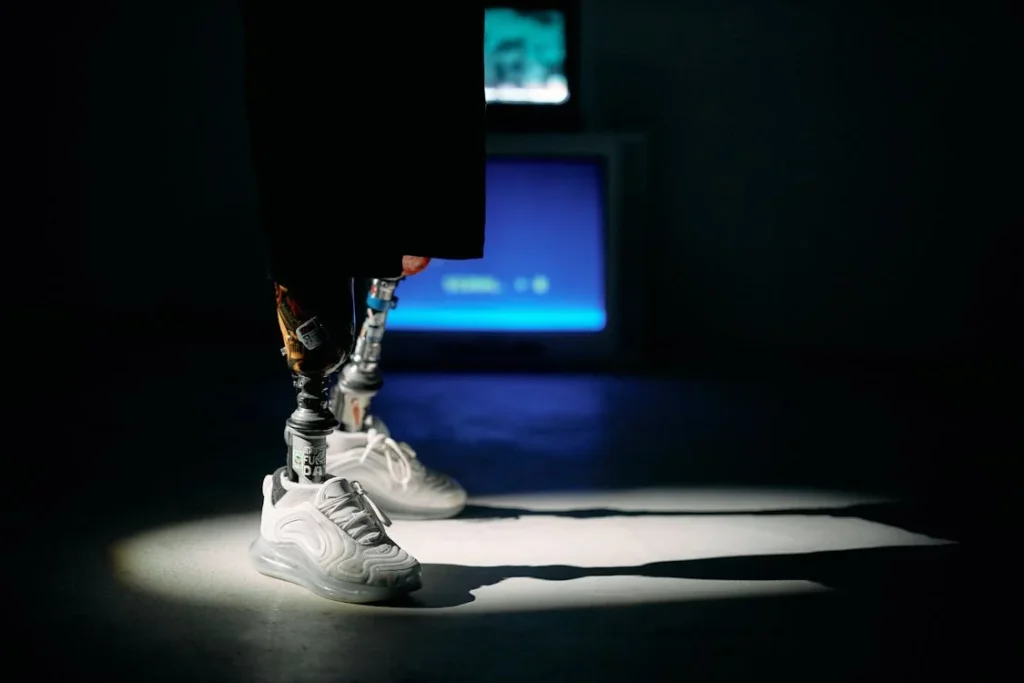
Real Patient Success Stories: How Early Prosthesis Fitting Changed Lives
At Robobionics, we’ve had the privilege of supporting hundreds of patients on their recovery journeys. Each story is different — shaped by age, background, goals, and type of amputation — but there’s one pattern we see over and over again: patients who receive their prosthetic limb early recover faster, feel stronger, and regain confidence sooner.
These are real people from across India — from Noida to Nagpur, from Chennai to Chandigarh — who chose to move forward early. Their experiences reveal what’s possible when early fitting is done with care, precision, and the right support system.
Let’s take a look at a few of these powerful journeys.
Meera’s Story: Returning to Teaching After a Below-Knee Amputation
Meera, a 44-year-old primary school teacher from Lucknow, lost her lower right leg in a traffic accident. It was a devastating blow. For a few days, she couldn’t even imagine going back to the classroom.
But her surgeon and physiotherapist both encouraged early rehabilitation. Within five weeks of surgery, Meera was fitted with a temporary below-knee prosthesis. The limb was lightweight, designed to support basic mobility while her body continued to heal.
At first, she practiced walking indoors — between rooms, then on her terrace. With daily therapy, her balance improved, and so did her strength. The key was consistency.
Within three months, Meera had not only regained the ability to walk but had also returned to teaching — standing in front of a classroom full of eager children.
“I didn’t wait for everything to be perfect,” she said. “I just started small. That prosthetic leg gave me my rhythm back.”
Vikram’s Story: Beating Muscle Loss After a Farming Injury
Vikram, 56, was a farmer in Haryana who lost part of his left leg in a harvester accident. Used to a very active lifestyle, he feared the worst — becoming dependent, losing income, and being unable to help on the land.
When he arrived at our clinic, he was still in pain but determined. We helped him start with pre-prosthetic care: compression, stretching, and light movement. Six weeks later, he was ready for his first limb.
Using the prosthesis, Vikram began standing and walking with the help of parallel bars. His upper leg muscles, which were beginning to shrink, slowly came back to life. What made the biggest difference? Daily farm-simulated exercises built into his therapy — tasks like lifting, crouching, and balancing on uneven ground.
After four months, he resumed light farm duties. Today, he walks independently, using a customized permanent limb designed for rugged outdoor use.
“If I had waited, I would have lost my strength completely. Getting the limb early helped me feel like a man again.”
Arjun’s Story: A Young Athlete’s Fast Comeback
Arjun was just 19 when a sports-related infection led to the loss of his left arm below the elbow. A promising cricket player and university student in Pune, he was devastated — not just physically, but emotionally.
But he didn’t waste time. With his family’s support, Arjun began therapy just days after surgery. He received a lightweight myoelectric prosthesis within six weeks and began training with it almost immediately. The goal wasn’t just function — it was agility.
He worked with a prosthetic trainer to rebuild grip strength and coordination. Using rubber balls, resistance bands, and specialized tools, he pushed his limits every week. Within five months, he was back on the cricket field — not as a batsman, but as a fielding coach.
“Early fitting helped me focus on what I could do — not what I had lost,” Arjun told us. “It gave me purpose.”
Sumitra’s Story: Early Fitting in Senior Years
Sumitra Devi, 72, from Jaipur, lost her leg due to diabetes-related complications. Her doctors were cautious — she had high blood pressure and mild osteoporosis. But Sumitra was motivated.
Working gently and slowly, her care team focused on early limb shaping and basic strength. Just eight weeks post-surgery, she received a soft-fit prosthesis and began walking with a walker under supervision. She practiced every day, first indoors, then on her veranda, then to the temple nearby.
Her muscle tone improved steadily, and within six months, she needed no walker.
“People think old age means you can’t learn,” she smiled. “But I learned to walk again — one small step at a time.”
What Do These Stories Teach Us?
Across all these examples, one truth stands out: early fitting doesn’t mean rushing. It means acting within the right window of opportunity. With the right support system and a customized approach, early prosthetic fitting protects muscles, speeds up emotional recovery, and brings back a sense of freedom.
Every one of these patients had different needs — but what they shared was a decision to start sooner rather than later. That choice made all the difference.
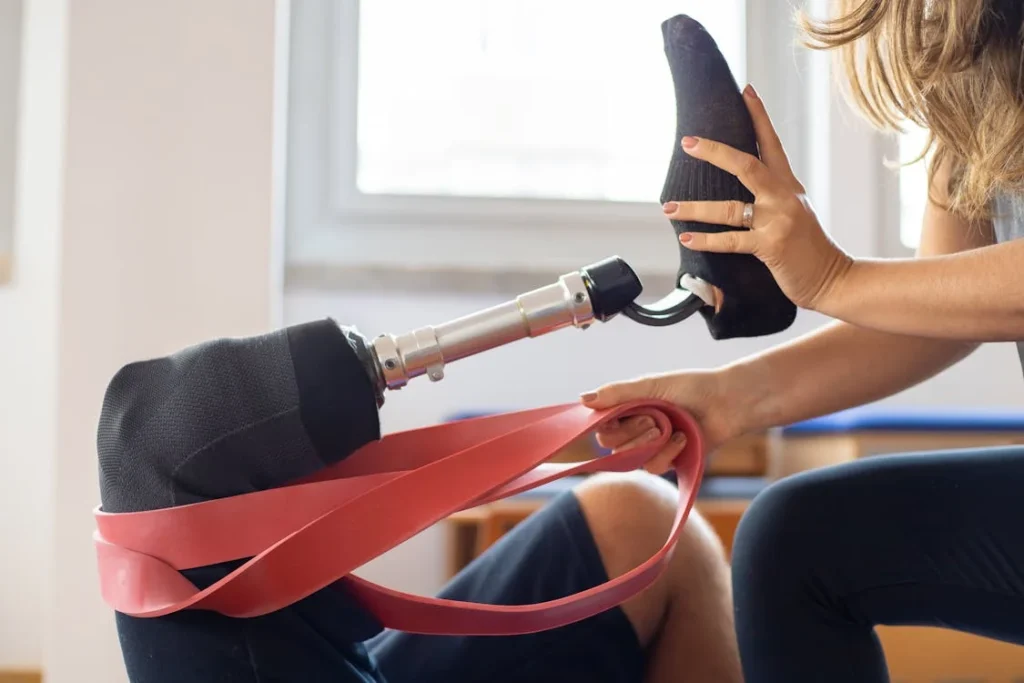
Taking the First Steps: Your Guide to Early Prosthesis Fitting
By now, it’s clear that early prosthesis fitting isn’t just a clinical recommendation — it’s a life-changing decision. But we also understand that taking that first step can feel overwhelming. There’s a lot to consider: medical readiness, mental preparedness, choosing the right prosthesis, and finding the right support team.
That’s why we’re closing this guide with a clear, simple roadmap to help you or your loved one start the journey toward early fitting — safely, confidently, and with the right people by your side.
Step 1: Talk to Your Surgeon and Rehab Team Early
Before the surgery — or as soon after it as possible — ask your doctor about prosthetic planning. Many patients wait until the stitches are out to begin thinking about a prosthesis. But conversations about early fitting should begin before that point.
Ask these questions:
- When will I be ready for a temporary prosthesis?
- What can I do to prepare my limb during the healing period?
- Who will guide my pre-prosthetic therapy?
This conversation helps create a timeline. It also shows your care team that you’re serious about recovery.
Step 2: Start Pre-Prosthetic Therapy Right Away
You don’t need a prosthetic limb to start rehab. In fact, many of the most important exercises begin before the limb is even fitted.
Your therapist will guide you through:
- Gentle stretching to avoid stiffness
- Strength training to keep surrounding muscles active
- Positioning tips to prevent contractures
- Massage and compression to shape the residual limb
This is also the time to begin emotional healing — working with counselors or joining peer support groups can make a big difference.
Step 3: Choose the Right Prosthetics Partner
Your prosthetist is your guide, your technician, and your supporter. Choose someone who:
- Specializes in early fittings
- Works closely with your medical team
- Offers trial limbs and adjustments
- Provides therapy support or referrals
At Robobionics, we assign a dedicated care coordinator to every new patient. That person helps track progress, answer questions, and coordinate between doctors, therapists, and the prosthetic lab.
Step 4: Begin With a Temporary (Interim) Prosthesis
Don’t wait for a permanent limb. A temporary or trial prosthesis is your bridge — your first tool to start moving, engaging muscles, and getting back to daily life.
This limb is lighter, simpler, and often adjustable. It’s designed to:
- Get you up and walking sooner
- Help your body adapt to new movement patterns
- Keep muscles active and prevent atrophy
- Boost confidence through early activity
Even walking 10 minutes a day with support can dramatically change your body’s healing response.
Step 5: Stay Consistent With Therapy and Movement
This is where real transformation happens. Early prosthesis fitting is just the beginning — the results depend on what comes after.
Stay committed to:
- Daily use of the prosthesis (even for short durations)
- Regular physical therapy sessions
- Monitoring your limb for fit, skin health, and comfort
- Asking for help or adjustments when needed
Set realistic milestones. Celebrate small wins. Track progress. And always speak up if something doesn’t feel right.
Step 6: Prepare for a Permanent Limb — When You’re Ready
Once the residual limb has stabilized — typically 3 to 6 months after surgery — you’ll be ready for a permanent prosthetic limb.
By this time, you’ll already be familiar with prosthesis use. Your muscles will be stronger. Your movements will be more natural. And most importantly, your mind will be ready.
This is when prosthetics truly become part of your daily life — not just a tool, but an extension of your body.
conclusion
Muscle atrophy after amputation is not inevitable. It’s preventable. And one of the most powerful ways to prevent it is by fitting a prosthetic limb early, under the guidance of a skilled team and with a plan that respects your body’s pace. Early prosthesis fitting isn’t about rushing. It’s about being smart with time. Muscles don’t wait — they fade quickly if left unused. But with the right action, they can come back just as fast.
Whether you’re a patient, a family member, or a caregiver, know this: You have more control than you think. And the sooner you begin, the stronger your future will be.
At Robobionics, we’re here to help. From pre-surgery consultations to advanced prosthetics tailored for real Indian lifestyles, our mission is to restore motion, dignity, and independence — one step at a time.
Reach out today. Let’s walk this journey together.



